Alex Constantine - July 24, 2009
Also see: "Karadzic protected by US until he broke 'deal': Belgrade report"
JACK HITT
NYT
July 22, 2009
Lars Tunbjork/Agence Vu New York Times
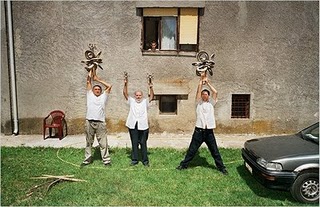 Mina Minic, center, demonstrating neutralizers. The big ones, he said, can be placed at intersections to neutralize bad radiation that causes accidents. Lars Tunbjork/Agence Vu, New York Times
Mina Minic, center, demonstrating neutralizers. The big ones, he said, can be placed at intersections to neutralize bad radiation that causes accidents. Lars Tunbjork/Agence Vu, New York Times
It was Mina Minic’s wife who first opened the door, that day in 2005, to find a tall man inquiring if this was the house of “academic professor doctor Mina Minic.” The tall man gave Mrs. Minic a bouquet of flowers and kissed her hand. When Mr. Minic, a short, chipper Serbian soothsayer with 19th-century-style mutton chops, came down to the door, he found a “very strange” man who introduced himself as Dragan Dabic. The man wore a long overcoat with a gentleman’s hat, and when he lifted it, he revealed long gray tresses pulled up into a topknot, set beaklike at his forehead. Below, he sported a full bushranger beard. Minic’s first impression, he told me, was that Dabic looked “like a monk who had done something wrong with a nun.” Dabic asked if Minic was the famous “maestro of radiesthesia,” the master of a dowsing method that instead of a stick relies on a pendulum called a visak. (Depending on which account you read, radiesthesia dates back as far as the Egyptian pharaohs or some decades ago to a guy named Albert Abrams in San Francisco.)
Around the same time that Minic opened his door, another Belgrade clairvoyant, Dusan Janjic, had a similar encounter. The tall man appeared one day in the same get-up, again with flowers in hand for the wife. Dabic expressed profound admiration for Janjic’s talents — specifically, his prowess in reading energy grids with something called a Multi-Zap Zapper.
After acquiring his own Zapper and visak, Dabic grew professionally close to both Minic and Janjic. He came to spend vast swaths of time holed up in Minic’s office, a humble basement room where a desk was improvised from a bookcase set upon two chairs. Sometimes Dabic would sleep on a cot there. When Minic or Janjic would ask about Dabic’s history or his credentials, he’d be vague. He had lived in New York, he would say, but his marriage to his wife, who remained in New York with his children, had ended on an ugly note. Minic remembered that his friend maintained “four or five” cellphones and that they rang all the time. “He would always arrange to call everyone back,” Minic explained. “That’s why I thought he was a spy.”
But he wasn’t a spy. As Minic and Janjic (along with the rest of the world) were shocked to find out last July, their tall protégé with the eye-catching hairdo was Radovan Karadzic, the most hunted war criminal on the planet.
Karadzic came to power in the early 1990s, as Yugoslavia succumbed to the shattering forces of intense nationalism. After Bosnia and Herzegovina declared its independence, Karadzic led Serbs in Bosnia to declare their own republic, allied with Serbia and independent from Bosnia. As the president of the Republika Srpska, and with the aid of Slobodan Milosevic’s Serbian government in Belgrade, Karadzic and his notorious military general, Ratko Mladic, carried out a brutal war against Bosnia’s Muslims, besieging Sarajevo for three years and perpetrating the worst war crimes in Europe since World War II. Some 8,000 Bosnian Muslims in Srebrenica alone were massacred in the space of a few days in July 1995. The grim excavation, identification and reburial of the dead continues to this day. The term “ethnic cleansing” had gained currency by then as a way to describe these murders as well as other, more nuanced forms of genocide. Many Muslim women in Bosnia, for instance, were confined in camps, repeatedly raped until impregnated, held until they were visibly pregnant and then released.
In July and November 1995, the International Criminal Tribunal for the former Yugoslavia, or I.C.T.Y., indicted Karadzic and Mladic for genocide, crimes against humanity and violations of the laws of war. International sanctions successfully forced Milosevic to cut off military aid to the Bosnian Serbs. The war wound down, and Karadzic began to lose power. In 2000, after NATO bombed Belgrade during the Kosovo war, Milosevic was overthrown and captured and then, in 2001, sent to The Hague to stand trial for war crimes. He died in 2006 before there was a verdict. Karadzic, along with Mladic, managed to evade Milosevic’s fate by dropping out of view.
On the streets of Belgrade, Karadzic rumors flew. Some said he was living the rugged life of a guerrilla hero in the mountains. Others believed he was in exile in Eastern Europe or South America. So most Balkan watchers were honestly stunned when Dabic was arrested last summer on a city bus, tooling around Belgrade like any other regular Slobodan. With a haircut and a shave, the Multi-Zap Zapping radiestician instantly disappeared, and there, soon enough in the papers for all to see, were the confident eyes, the clear jawline and the telltale bouffant of Radovan Karadzic.
During Karadzic’s years underground, Serbs never really came to a stable national consensus about the man’s politics or his war. The reformist leader Zoran Djindjic, who was elected prime minister in 2000 after Milosevic’s fall, was gunned down in 2003 by nationalist forces aligned with the Karadzic wing of Balkan politics. And Boris Tadic, the reformer who became president in 2004, actually placed second, to a nationalist candidate, in the first round of the 2008 election. He retained his office only after winning a runoff with 50.5 percent of the vote. Tadic’s hold on power is complicated by two widespread and contradictory beliefs: that his government knew of Karadzic’s whereabouts and betrayed him for a pat on the head from the European Union; and that Karadzic successfully hid in plain view from an inept government. These days, the nationalist arguments have been subsumed into the newest quarrels about Tadic’s eagerness to join the European Union. Every week at Republic Square in Belgrade, Karadzic’s supporters unfurl their banners and make angry speeches about how Tadic’s dream will turn them all into serfs for, say, Fiat.
For many Serbs, Karadzic is a paradoxical figure. They can speak eloquently of his heroism and in the same breath condemn his war crimes. As the Serbian author Jasmina Tesanovic wrote last summer on the American Web site Boing Boing, Serbia itself was a lot like the bipolar Dabic-Karadzic personality — a fictitious and benevolent present built upon the denial of a bloody past. “Since the fall of Milosevic,” she wrote, “the city of Belgrade has led a double existence.”
At the time of his arrest, Dragan Dabic was fast becoming a minor celebrity in Belgrade. He had his own column in a national magazine. He was a rising star in a Connecticut-based vitamin company. And he was collaborating with a well-known sexologist on a novel form of sperm-rejuvenation therapy.
So after Karadzic was hustled off to The Hague last July to stand trial for war crimes, some knotty questions lingered. I made e-mail contact with Tesanovic, whose antiwar writings became popular in the late ’90s, and she agreed to shepherd me into Serbia’s alternative-medicine culture to find out how a nationalist like Karadzic mustered such hippie panache. What was his life like then, and how did he pull off this pose among a tofu-eating set more associated with one-world values? Who were these biofeedback healers and Serbian soothsayers he hid among for three years? And what did they think now?
Precisely when Dabic the character was born is not known, but Bruno Vekaric, a spokesman for the I.C.T.Y. in Belgrade, told me that Karadzic’s new identity began to take shape during the collapse of his rule. Tribunal investigators say they believe that the Serbian secret police issued Karadzic documentation in the name of an existing man named Dragan Dabic, a rural innocent who had not traveled much, if ever, and so made a perfect foundation on which to build a character. “I think it was the conclusion of the secret police that it was safest to use the ID of a peasant who didn’t move around,” Vekaric said in Serbian, as Tesanovic translated.
For the first half of this decade, Karadzic hid out, at the very least growing his hair. The I.C.T.Y. suspects that he was holed up in the Serbian countryside while reports that he was abroad were spread by sympathizers eager to throw the tribunal off his trail. In 2005, he emerged as Dragan Dabic, knocking on Minic’s and Janjic’s doors with flowers for their wives.
Minic, the maestro of radiesthesia, met me at a restaurant on the Danube for a dinner of selected meats. Tiny columns of cigarette smoke rose from the hands of the few customers and from the waiters leaning against a far wall.
Before he would discuss Dabic, Minic insisted that he needed to use his visak to find out more about me. He held the rooklike pendulum in his hand. A string led to another rook, which he gently dangled at me. “You have Russian blood,” Minic said, as I sampled some sausages. I broke the news that my ancestry was in fact predominantly Scottish.
“You are a high-ranking official who runs armies,” he continued. I’ve been pretty much self-employed since college; no armies to speak of. The only subordinate who obeys my command is my dog, and he’s pretty iffy. Minic put away the visak with a smile of serene satisfaction, as if he wanted to give me some time, after enjoying the awe of his radiesthesia, to just mellow.
Minic wanted to explain the vast improvement he had contributed to the world of radiesthesia. Typically, sages of this art dangle a single visak made from iron and dipped in beeswax. But Minic developed the double visak connected by a string. He discussed such distinctions with me for hours. Dabic professed to be much impressed by Minic’s innovation and often spent entire days editing Minic’s still-unpublished manuscript, “Academic and World Immortal Mina Minic’s New Radiesthesia With Two Pendulums With Two Hands.”
The world of alternative medicine turns out to be a brilliant refuge for a man with something to hide. Every so-called healer I met in Belgrade seemed curious about just one thing — his own healing method. Expressing the mildest interest in visak technique or energy fields would set off hours of one-way conversation. Janjic, the man who mastered energy fields, remembered Dabic as someone who was always asking after Janjic’s work but rarely spoke about himself. “He would never sit down and eat with us,” Janjic recalled.
And that is another aspect of Dabic’s transformation that is clear in the photographs. Keeping his weight down was another way of hiding. It hollowed out his face a bit, pulling down and distorting the appearance of his eyes. The attention-diverting topknot, which altered the sense of his height, kept the gaze away from a face already obscured by the bushy beard. Dabic also affected a Belgrade accent, as notably different from his native accent as an Alabaman speaking in Brooklynese. In the end, Dragan Dabic inhabited a persona and a face that obscured every physical, auditory and historical feature associated with Radovan Karadzic.
“Across from Dabic’s apartment in New Belgrade, there lived a woman who worked at Interpol,” Vekaric of the I.C.T.Y. told me. “Every morning this woman switched on her computer and there was a picture of Radovan Karadzic and Osama bin Laden. And each morning she would say good morning to Dragan Dabic.” She never suspected who her neighbor was.
Over time, Karadzic found a healing method that would work for his Dabic character. He chose a very simple, rustic, ancient practice, something almost generic: bioenergy. Dabic would roam his hands inches away from someone’s body to cure him by balancing his energy flows. And while everyone had stories of miraculous Dabic cures, no one was ever able to introduce me to any happy patients.
By 2006, his persona as an energy healer was sufficiently practiced that he sampled other branches of alternative medicine. He began attending seminars at Balans Medika, a well-appointed biofeedback clinic in the heart of old Belgrade. The 19th-century building has high, magnificent ceilings set off by decorous wainscoting. When I visited Jadranka Sunic, the clinic’s director, the upholstered chairs in her office were decorated with finely laced pillows. Her clients were not rural peasants looking to have their fortunes told but “employed people,” Sunic explained, “working people who don’t have a lot of time.”
Balans Medika offers numerous seminars in emerging fields of alternative medicine, and Dabic was soon a regular. “In the summer, he would wear a white hat and in the winter a black hat,” Sunic said. “He had a long overcoat, winter or summer, and he had two pairs of gloves, white and black. He would always take off his hat and bow.” His walk was slow and courtly.
To American ears, the story of the war criminal hiding out among the new-age healers sounds like a classic when-worlds-collide narrative. But in Serbia, things are more complicated. Karadzic’s entry into his adopted community was eased by his unusual prepolitical careers as a poet, a psychiatrist in the world of traditional medicine and a hustler who sold fraudulent medical evaluations to people looking for disability pensions. There was also the fact that in Communist Yugoslavia, as Tesanovic explained to me, alternative medicine was suppressed, along with all antiscience superstitions, including, in the eyes of the Communists, the Serbian Orthodox Church. In Serbia, then, the politics of alternative medicine became a haven for right-wing anti-Communists — an expression of ancient Balkan heritage. In the war against the Bosnian Muslims, Karadzic and his fellow Serb nationalists co-opted the one-string folk instrument known as the gusle and turned it into a cultural symbol of national pride. Most of the alternative healers I met either had a gusle on their wall or a pin of one on their lapel.
While Dabic was taking classes at Balans Medika, Sunic and others organized a new group: the Nikola Tesla Association. The famous Serbian inventor is not just the local kid made good: his name, everywhere, stands for the hope that lurking beneath the tediously materialistic surface of our world lie the phantasmagorical powers of a hidden realm. One person who was eager to help with the written constitution of the Tesla Association was Dragan Dabic.
The charter makes a solemn call to professionalism and urges healers to take themselves seriously and to organize into a powerful lobby. The main intent is to bring together a chaotic world rich in wild subspecialties that includes everyone from old visak prophets to biofeedback technicians, as well as the sibyls of apitherapy, Bach’s Flower Remedies, qigong, phytotherapy, iridology, kinesiology, quantum medicine, magnotherapy, microwave resonance therapy, neuro-linguistic programming, Reiki segment therapy and “other methods as they are recognized by the official organ, such as light therapy, therapy of colors and the wise application of Tesla’s VK electricity.”
In October 2007, Dabic’s friend Janjic told him about a large convention of alternative and traditional healers in Belgrade sponsored in part by the national magazine of alternative medicine, Healthy Life. There he met Goran Kojic, then the magazine’s editor, a gaunt, pale man with a light-bulb forehead accentuated by a moustache and a touch of Serbian soul patch at his chin. Right away, Kojic told me, he sensed Dabic’s charisma and enthusiasm, especially after Dabic proposed to write a column in Kojic’s magazine. Kojic asked about credentials and heard the awkward story about the nasty split with his contemptuous wife back in New York. She refused to mail him his diploma, Dabic explained, and Kojic didn’t press the issue. “It’s a little unpleasant to ask someone for his diploma,” he explained to me.
Dabic’s column was called Meditations, and it ran in five issues before the war-crimes prosecutors interrupted Dabic’s writing career. Still, there it is, in the clip file, a very peculiar, Karadzic-like call to nationalism — as if his journey into alternative medicine was in fact a search for another gusle, an obscure symbol that might catalyze the people — all cast in Healthy Life’s yogurty prose. Each article is breaded with sentences like, “You will encounter light and what is possible in the understanding of God, not his essence but his manifestation through energy.” A lot of that. Eventually, though, each column mentions tihovanje, a rarefied form of Serbian meditation reserved for the holiest of monks in the Serbian Orthodox Church. “There is no visible reason that tihovanje shouldn’t be a widespread practice of achieving health and spiritual elevation,” Dabic wrote. He worried that people who employed other techniques “will be used and become indoctrinated by Eastern methods.” Like any good nationalist, he invoked mother Serbia: “In our place, tihovanje represents a very high spirituality and religious feeling.” Everything that comes from the homeland is better: “If you use tihovanje, you will achieve higher states of being because it is from your own culture.”
By mid-2007, a doctor friend introduced Dabic to the folks at CaliVita, a Connecticut-based vitamin firm, who signed him up as a sales representative in Belgrade. Several people who watched the topknotted salesman in action told me that he was very skilled at what, in the post-Madoff era, is gingerly called pyramid marketing.
Around this same time, Dabic made contact with Savo Bojovic, a locally renowned sex therapist. A large, blockish man, Bojovic met me for coffee wearing a green suit, a green laced-up shirt and a green handkerchief (the bow tie was gold). His preferred color is forest green, he told me, because it reminds him of the rural Serbia of his childhood. The covers of his books match his suit. He inscribed for me his 1,043-page tome, the very chlorophyllous “Humana Reprodukcija,” in matching leaf-green ink from one of the special pens he carries.
Bojovic is a man of many inventions and theories, which is how he and Dabic connected. He explained that his current work is a study of his nation’s penises. Before he would discuss Dabic, he insisted on walking me and Tesanovic through a scrapbook with some 2,000 Polaroid close-ups of middle-aged, mainly Serbian penises. Bojovic said that he had recently proved that Serbian men can have active sex until the age 102 and Serbian women until 84.
He seemed especially interested in treating “strong-blooded women who cannot live without sex.” For them he has invented a special device called an aplikator, which can bring on a “gentle orgasm” and which can also be marketed (he insisted on telling me despite my best efforts to stop him) to “men who have problems with the colon or problems in the bathroom.” He does not ignore the active man, however. For womanizers, especially, he has invented the Spermosan. It is a small metal cup that attaches snugly to the testicles; through the cup, Bojovic detonates “a gentle surge of electricity that makes the sperm fall asleep, and then a womanizer can go womanize without being afraid of an unwanted pregnancy.” Even though this invention is “the one most deserving of praise,” he reported that the total number of clients for the Spermosan was “not many.”
Into this world of devices and notions arrived Dragan Dabic. “He put his hands close to my cheeks, and I felt a terrible energy of warmth,” Bojovic said. Dabic’s warm hands gave Bojovic an idea. He put some sluggish sperm on a microscope slide. “I was holding the glass slide, and he was putting his hands above and below,” Bojovic said. “He kept them there for some time, and then I put the slide under the microscope, and I was nicely surprised to see the sperm really moving faster.”
Bojovic and Dabic successfully repeated the slide experiment 10 times. “I had the intention of developing a method in which Dabic could heal our patients, holding one hand under the testicles and one on top of the testicles,” Bojovic explained. Unfortunately for infertile Serbs, Dabic’s arrest ended the testicle experiments.
Bojovic said he still believes in this fertility therapy and still believes that the bioenergetic healer he knew as Dabic was honest with him. In fact, nearly every healer I spoke to in Belgrade seem baffled by any suggestion that they had been tricked in any way. “I didn’t feel deceived,” Bojovic said. “He didn’t deceive me.” The fact that Dabic’s very name and his entire persona was a vast deception seemed to them almost a marginal fact.
“I didn’t feel deceived by him,” Sunic, of Balans Medika, insisted. “Everybody has their own reason to be in disguise.”
No healer could square the politician who oversaw mass murder and rape with the spiritual man known for his easy manner and even the occasional joke. Curiously, according to Kojic, the magazine editor, Dabic avoided all discussion of politics. But sometimes his Serbian pride would slip out in his jokes, especially self-deprecating jokes that might knock areas where Serbs live (like Bosnia and Montenegro) but still work in a reference to, say, Herzegovina, an area where the Serbs are considered especially brave and wild and ruthless. There were these three Serbian wives, see. And the Bosnian wife hid her money from her husband under a book because Bosnian men would never take down a book to read. The Montenegrin wife hid her money under a shovel because Montenegrin men would never lift a shovel to work. But where did the Herzegovinian wife hide her money? Right on the table — because “son of your mother, take the money if you DARE.’’ In a room full of Serbian healers, this punch line brings down the house. And for them, imagining the man who told such a self-effacing joke to be a war criminal just seemed impossible.
“I don’t know Radovan Karadzic,” insisted Janjic, the Multi-Zap Zapper. “None of us knew Karadzic. There is only one truth, believe me. That truth is that we only knew Dragan Dabic.”
To them, Dabic was not the most cunning Zelig of modern Europe but rather the authentic embodiment of some inner and more-benevolent Karadzic. More than one suggested that Dabic was the real person and that Karadzic the war criminal was the fabrication.
There was one other group with which Karadzic socialized outside the secure realm of alternative medicine: his drinking buddies. Toward the end of his star turn as a bioenergy healer, he sallied forth as Dabic to a radical-right-wing bar in the suburb of New Belgrade catering mainly to hard-drinking nationalists and military vets, a tiny one-room joint called Luda Kuca, which, translated, means the Madhouse.
On the night that Tesanovic and I visited, the little room was filled with a dozen menacing figures: an old soldier in a beret and scarf with a limp; a man with jet-black hair, one tooth and the long face of Syria’s Hafez al-Assad; and another man so drunk that his side-turned face lighted by a smoldering cigarette in his lips floated improbably a few inches above a table. The bartender looked like a snarling Tim Roth, and one hypersuspicious guy in a voluminous army-green jacket squinted an eye shut like an old pirate. When he heard I was an American, he fixed his gimlet eye on me for two uninterrupted hours.
The bar owner, Tomas Kovijanic, happily sat down to tell us the story of his most famous patron. “Late one evening, Dabic was passing in front of the restaurant,” Kovijanic said. “He heard the sound of the gusle. The door opened, and the big white bird came in.”
Kovijanic told the story of a beehive in a tree outside so laden with honey that it fell. People panicked and blasted it with poison. Dabic intervened: “People, please don’t kill the bees. They are living beings. Nobody should kill a living being.” Such parables filled the evening, eventually shifting to stories of miraculous cures of children suffering from depression, whose contact with Dabic redeemed them as functioning and productive members of society.
As the night progressed and Kovijanic drank glass after glass of lozovaca, a grape brandy, the stories veered closer and closer to the one domain where Karadzic is Dabic and vice versa: mythology. Here, in the Madhouse, Radovan Karadzic was both a great leader and a holy man, the bold defender of Serbian purity and the meek spiritualist whose love of life was so intense that he would defend the bees. But each happy story of Saint Radovan of Karadzic ended with a dark intimation that there would be a price to pay for the sour ending of this epic. In this crowd, everyone assumes that someone collected the $5 million reward for turning him in — an assertion unconfirmed outside the Madhouse. The story of the great leader ended, as they saw it, like so many other narratives in Serbian history — in betrayal.
The army officer with the limp came over to our table to say that he proudly served in Karadzic’s army. He took down the gusle from the wall and started to sing of their leader carried off to The Hague. If the medium is the message, the message of the gusle is one of lament and betrayal. The single string twanged out a melancholic note. “Brother Serbs!” cried the captain, “you are cutting off your own wings for a bunch of bloody dollars; you betrayed such a ruler, the biggest guerrilla fighter in Europe!”
The lozovaca flowed, and the small crowd gathered a little more closely at my table. I was warned by a guy named Blagojevic that he had relatives in Chicago. I had been told numerous times during the evening that I had better write the truth — their truth — and the frequency of the warnings was increasing. I paid my bill and thanked the owner and moved toward the front door. The Assad lookalike leapt up and insisted that I stay and drink with him, demanding that I let him buy me a lozovaca.
I explained through Tesanovic that American journalistic practice forbade me from having drinks purchased for me but that I could buy them a drink. “We don’t want your filthy American dollars!” Assad screamed. People were getting up from tables and moving toward me. Tesanovic was simultaneously translating and trying to usher me out the door, her efforts slowed by my dorky defense. It took me a few, dear minutes to realize that I was about to get an old-fashioned pounding.
Then Tesanovic shouted, “I am a Herzegovinian woman, and this insults my honor!”
The bar grew quiet for a second. The gusle-playing army captain stood on his shrapnel-filled legs and cried out, “I will defend the honor of any Herzegovinian woman.” (For the record, in a right-wing Serbian bar after a long night of lozovaca, the honor of a Serbian woman is a much better exit line than expense-account protocol.)
Suddenly, the rules of the barroom brawl were pitted against the chivalric codes of Serbian poetry. The owner, sensing that the room was poised between two ancient callings, waved his hand dandyishly toward the door. “An American and a woman,” he said witheringly and dismissed us into the dark, where we quickly disappeared to find the bus back to downtown Belgrade.
When daylight came, Goran Kojic, the Healthy Life editor, wanted to talk one more time. He seemed the most troubled by the unresolvable contradictions of his recent life. Was the pose of the gentle spiritualist a complete fake and a cover for a soul darkly outed as hideous, violent and bestial? Or was there some truth to Dabic’s character?
“There are two options,” said Kojic, cautiously, hesitantly, as if he were speaking for a nation. “Either we are all a bunch of fools and madmen who believed in the existence of a nonexistent man.” Or, he said, there is the possibility of redemption.
“Do you believe a man can change?” he asked me plaintively. Then he said: “Karadzic is Karadzic. He lived before Dragan Dabic. My claim is that they are the same person in a life-and-death struggle.” As Kojic sees it, Karadzic’s trial at The Hague, set to start in September, is much more than a war-crimes prosecution; it is the internal battle of a divided man. “If Dabic defeats Karadzic, he has some chance not only to turn around his life but to reveal to many other people the possibility of transformation from bad to good,” Kojic said. But “if Dabic loses that battle, God will turn his back on him.”
The ending will be like an epic sung on the gusle, yet not of the traditional genre — more surrealist. The ending, Kojic said, will turn on the “testimony of a man whom many say never existed or that of another man whom everybody says used the first one as a mask.” He went on: “There will be other characters in the story, but those two are the protagonists, and they are fighting for their lives.”
Jack Hitt is a contributing writer for the magazine and is currently at work on a book about amateurs in America.
http://www.nytimes.com/2009/07/26/magazine/26karadzic-t.html?_r=1&pagewanted=all



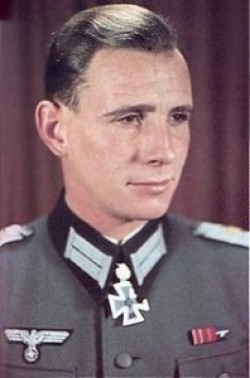
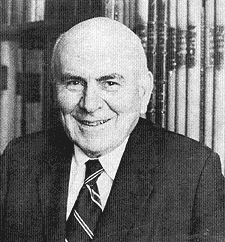
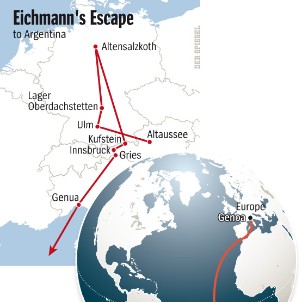
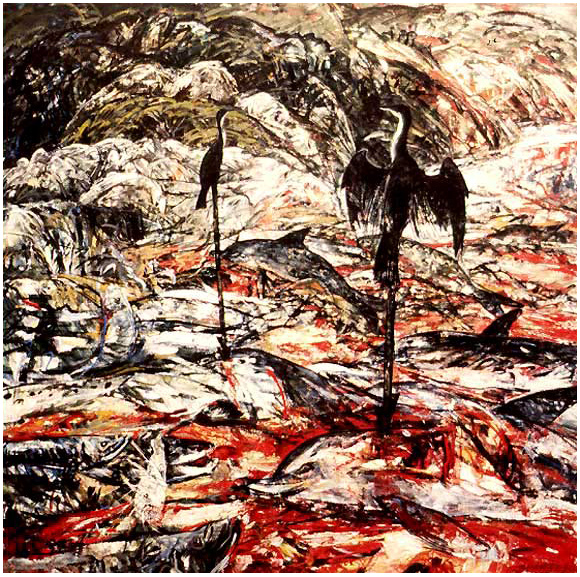

Interesting article, but the history is the usual US propaganda hogwash. The stuff about women being raped then released 'when obviously pregnant' just sums up how much rubbish the journalists of corporate America are prepared to swallow in the interests of conformity with power. If this rubbish was being said about US troops in Iraq I imagine there'd be rather more checking of the authenticity of such claims. But when it's about the hapless Serbs you can be as racist as you like and frankly no one gives a damn.
The Madhouse is in the US, and not in some suffering little Serbia.